
COMPUTING IN SCIENCE & ENGINEERING
Scope & Guideline
Connecting Researchers to the Cutting Edge of Computing.
Introduction
Aims and Scopes
- High-Performance Computing (HPC):
The journal emphasizes advancements in high-performance computing, including discussions on exascale systems and their applications in scientific research. - Software Development and Engineering Practices:
It explores best practices in software development tailored for scientific computing, including continuous integration, reproducibility, and sustainable software practices. - Data Management and Visualization:
The journal covers innovative techniques in data management, visualization, and analysis, particularly in complex scientific datasets. - Interdisciplinary Collaboration:
Promoting collaboration across disciplines is a key focus, encouraging the integration of computing methodologies in diverse fields such as physics, climate science, and biomedical research. - Emerging Technologies:
The journal addresses the impact of emerging technologies, such as quantum computing and AI, on scientific research and engineering applications. - Educational Approaches in Computational Science:
It highlights educational methodologies aimed at improving the skills of future scientists and engineers in computational techniques.
Trending and Emerging
- Artificial Intelligence and Machine Learning:
There is a significant increase in research focusing on AI and machine learning applications in scientific discovery, automation, and data analysis, reflecting the growing importance of these technologies in computational science. - Software Sustainability and Community Building:
A trend towards sustainability in software development practices and the establishment of communities supporting collaborative software engineering efforts is evident. - Cloud Computing and Data Accessibility:
Emerging themes include the utilization of cloud-native approaches for scientific computing, emphasizing data accessibility and collaborative research environments. - Reproducibility and Transparency:
A heightened focus on reproducibility in scientific research practices indicates a commitment to transparency and validation of computational results. - Quantum Computing Integration:
The exploration of quantum computing paradigms and their integration into high-performance computing frameworks is becoming a prominent theme. - Diversity, Equity, and Inclusion in STEM:
There is an emerging emphasis on addressing diversity and inclusivity within computing and engineering fields, fostering a more equitable research environment.
Declining or Waning
- Traditional Programming Languages:
There is a noticeable decrease in publications focused on traditional programming languages like Fortran, as the community shifts towards more modern languages such as Python and Julia. - General Computational Models Without Specific Applications:
Research that presents generic computational models without a clear application context is becoming less frequent, as the journal favors case studies with practical implications. - Standalone Research Software:
The focus is moving away from isolated software projects towards integrated systems that encompass broader software ecosystems and collaborative tools. - Basic Algorithmic Studies:
There is a waning interest in purely theoretical algorithmic studies that do not translate into practical applications, as the journal leans towards applied research. - Single-Disciplinary Research:
Research confined to a single discipline is less prominent, with a growing emphasis on interdisciplinary approaches that leverage computing across various scientific fields.
Similar Journals
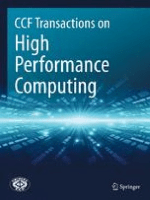
CCF Transactions on High Performance Computing
Bridging Theory and Practice in Computational ExcellenceCCF Transactions on High Performance Computing, published by SPRINGERNATURE, is an esteemed academic journal dedicated to advancing research in the field of high-performance computing. With an ISSN of 2524-4922 and E-ISSN of 2524-4930, this journal provides a platform for disseminating innovative findings, methodologies, and technologies that shape computational practices within various domains. Operating from Germany, it serves a global audience, reinforcing its impact through an impressive categorization in the Q3 quartile across multiple fields, including Computer Science Applications and Information Systems. The journal, which covers research from 2019 to 2024, plays a crucial role in bridging gaps between theory and practical implementation in hardware architecture and software systems. Although it is not an open-access journal, its contributions are invaluable for researchers, professionals, and students invested in the continuous evolution of high-performance computing. With Scopus rankings that highlight its relevance and influence in the academic community, CCF Transactions on High Performance Computing remains a key resource for the latest developments in this dynamic and rapidly evolving discipline.
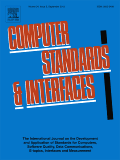
COMPUTER STANDARDS & INTERFACES
Empowering Researchers to Shape the Future of Interfaces.COMPUTER STANDARDS & INTERFACES is a prestigious journal published by Elsevier, dedicated to the intersection of technology, law, and standards in computing. With an impressive impact factor and categorized in the Q1 quartile across several relevant fields, including Computer Science Applications, Hardware and Architecture, and Software, this journal has established itself as a critical resource for researchers and professionals alike. Covering a comprehensive range of topics over its converged years from 1986 to 2025, it provides rigorous peer-reviewed articles and vital insights into the evolving landscape of computer standards. The journal's Scopus rankings affirm its significance with top percentiles in multiple categories, including a remarkable 12th rank in Social Sciences and Law. COMPUTER STANDARDS & INTERFACES welcomes contributions that push the boundaries of knowledge and foster discussions on best practices and innovations, making it an invaluable platform for students and seasoned researchers passionate about advancing the field.

Software and Systems Modeling
Elevating Research in Modeling and SimulationSoftware and Systems Modeling is a premier journal published by Springer Heidelberg, dedicated to advancing the fields of software engineering, modeling, and systematic design. With an ISSN of 1619-1366 and an E-ISSN of 1619-1374, this journal has established itself as a critical resource for researchers and practitioners alike since its inception in 2005. The journal currently holds a Q1 quartile ranking in the Modeling and Simulation category and a Q2 ranking in Software, reflecting its influential contributions to the field. Its Scopus rankings further underscore its relevance, positioned at #55 in Modeling and Simulation and #139 in Software, with impressive percentiles of 83rd and 65th respectively. Although it does not currently offer open access, it remains an essential platform for disseminating innovative research and fostering dialogue among professionals in Germany and beyond. The journal’s objective is to publish high-quality articles that contribute to the understanding and development of software and systems modeling, ensuring ongoing advancements in this dynamic arena.

COMPUTER PHYSICS COMMUNICATIONS
Fostering Dialogue in Computer Science and PhysicsCOMPUTER PHYSICS COMMUNICATIONS is a premier journal published by Elsevier, renowned for its contributions to the fields of computer science and physics. With an ISSN of 0010-4655 and an E-ISSN of 1879-2944, this journal has established itself over the decades, beginning its journey in 1969 and running through 2025, fostering innovative research and discussions. Recognized for its high impact, it sits in the Q1 quartile for both Hardware and Architecture as well as for miscellaneous Physics and Astronomy, underscoring its significance in the academic community. The journal's Scopus rankings further reflect its prestige, with a rank of #12 out of 177 in Computer Science and #18 out of 243 in Physics and Astronomy, placing it in the top percentiles of its field. Although it does not currently offer Open Access options, COMPUTER PHYSICS COMMUNICATIONS remains a vital resource for researchers, professionals, and students seeking to advance their knowledge and contribute to the ongoing dialogue in computer physics and its myriad applications.
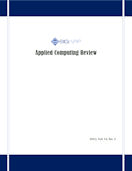
Applied Computing Review
Empowering Innovation in Applied ComputingApplied Computing Review is a prominent academic journal published by the Association for Computing Machinery (ACM), an esteemed organization known for advancing the computing profession. Focusing on the intersection of practical applications and theoretical foundations, this journal serves as a vital platform for disseminating research in the field of applied computing, facilitating knowledge sharing among researchers, professionals, and students alike. With an ISSN of 1559-6915, the journal encompasses a wide array of topics including software engineering, data analytics, and application development, addressing current trends and challenges in the industry. Although it does not offer open access, its rigorous peer-review process ensures high-quality publications that significantly contribute to the discipline. Positioned within a competitive landscape, Applied Computing Review is dedicated to fostering innovation and providing insightful perspectives that inspire further research, thereby solidifying its importance in the field of applied computing.
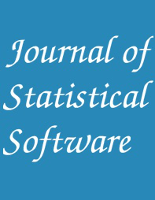
Journal of Statistical Software
Transforming data into knowledge with open access solutions.Journal of Statistical Software, published by the esteemed Journal Statistical Software, stands as a premier platform for the dissemination of cutting-edge research in the fields of statistical software development, methodologies, and applications. With an impressive impact factor and consistently ranking in the Q1 quartile for Software, Statistics and Probability, and Statistics, Probability and Uncertainty as of 2023, this journal is recognized globally for its scholarly contributions and innovative content. The journal has been an Open Access publication since 1996, facilitating unrestricted access to high-quality research for a diverse audience, including researchers, professionals, and students. As the journal converges into its 28th volume in 2024, it continues to maintain a strong presence in key academic rankings—evidenced by its stellar Scopus rank, where it is placed in the top 5% of journals in its field. Located at UCLA Department of Statistics, in Los Angeles, this journal is dedicated to fostering the advancement of statistical software and its role in enhancing scientific research across multiple disciplines.
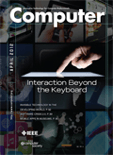
COMPUTER
Advancing the Frontiers of Computer Science.COMPUTER, published by the IEEE COMPUTER SOC, stands as a pivotal resource in the field of computer science, encompassing a broad range of topics and innovations within the industry. With an ISSN of 0018-9162 and E-ISSN 1558-0814, this esteemed journal features high-impact research articles that contribute significantly to the advancement of technology, demonstrating a prestigious Q1 classification in the Computer Science (miscellaneous) category for 2023. Positioned within the top percentile of Scopus rankings (ranked #84 out of 232), COMPUTER serves as an essential platform for sharing pioneering ideas and emerging trends that shape the future of computing. Although it does not currently offer open access, the journal's rigorous peer-review process ensures the publication of high-quality content. Researchers, professionals, and students alike will find invaluable insights into computer science developments from 1970 through 2024, making it a vital tool for anyone dedicated to this ever-evolving field.
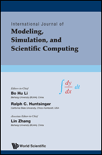
International Journal of Modeling Simulation and Scientific Computing
Elevating Research Standards in Computational MethodologiesThe International Journal of Modeling Simulation and Scientific Computing, published by WORLD SCIENTIFIC PUBL CO PTE LTD, is a pivotal resource in the realms of Computer Science Applications and Modeling and Simulation. With an ISSN of 1793-9623 and an E-ISSN of 1793-9615, this journal serves as a platform for innovative and high-quality research from 2010 to 2024, contributing to the advancement of methodologies and applications in various scientific fields. Although currently categorized in the Q4 quartile for both recognized domains and positioned in the 42nd and 36th percentiles in the Scopus rankings for Mathematics and Computer Science respectively, the journal encourages scholarly exchange and fosters the integration of modeling and computational analysis in scientific research. Researchers, professionals, and students alike will find this journal an essential tool to stay updated with trends, methodologies, and cutting-edge findings in simulation and computational techniques that drive scientific inquiry today.
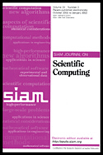
SIAM JOURNAL ON SCIENTIFIC COMPUTING
Unleashing the Power of Algorithms for Scientific DiscoverySIAM Journal on Scientific Computing is a premier journal published by SIAM Publications, focusing on the interdisciplinary domain of scientific computing. With a significant standing in the academic community, this journal boasts a 2023 Q1 ranking in both Applied Mathematics and Computational Mathematics, positioning it among the top-tier publications in these fields. The journal aims to disseminate high-quality research that applies computational methods to solve scientific and engineering problems, fostering advancements in numerical analysis, algorithms, and software development. Researchers and professionals can greatly benefit from the journal's rigorous peer-review process and its reputation for publishing cutting-edge studies. Though it is not an open-access journal, subscribing institutions and individual subscribers gain access to a wealth of knowledge tailored for those seeking to enhance their expertise in scientific computation. With its established history since 1996 and continuing to publish until 2024, the SIAM Journal on Scientific Computing remains an essential resource for students, researchers, and professionals dedicated to pushing the boundaries of this dynamic field.

Applied Computing and Informatics
Unlocking Innovations in Applied ComputingApplied Computing and Informatics, published by Emerald Group Publishing Ltd, is a prominent open-access journal that has been serving the academic community since 2011. With a focus on advancing the fields of Computer Science Applications, Information Systems, and Software, this journal has established itself as a noteworthy publication, currently ranking in the Q3 quartile for each of its categories in 2023. The journal is particularly recognized for its commitment to disseminating high-quality research, as evidenced by its impressive Scopus rankings—placing it in the 92nd percentile for Computer Science Applications and the 91st percentile for both Information Systems and Software. Based in Saudi Arabia, it adopts a global perspective, inviting contributions from researchers worldwide. With its open-access policy, Applied Computing and Informatics ensures that cutting-edge research is accessible to a broad audience, fostering collaboration and innovation within the computing and informatics disciplines. This journal is an essential resource for academics, professionals, and students seeking to keep abreast of the latest trends and developments in their field.